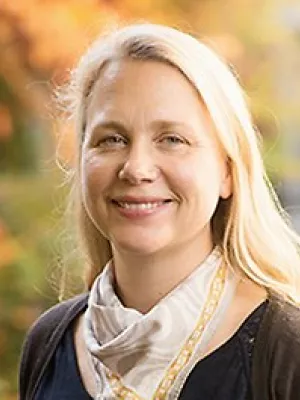
Helena Filipsson
Professor

Differences in metal tolerance among strains, populations, and species of marine diatoms – Importance of exponential growth for quantification
Författare
Summary, in English
Strains of microalgae vary in traits between species and populations due to adaptation or stochastic processes. Traits of individual strains may also vary depending on the acclimatization state and external forces, such as abiotic stress. In this study we tested how metal tolerance differs among marine diatoms at three organizational levels: species, populations, and strains. At the species level we compared two pelagic Baltic Sea diatoms (Skeletonema marinoi and Thalassiosira baltica). We found that the between-species differences in tolerance (EC50) to the biologically active metals (Cu, Co, Ni, and Zn) was similar to that within-species. In contrast, the two species differed significantly in tolerance towards the non-essential metals, Ag (three-fold higher in T. baltica), Pb and Cd (two and three-fold higher in S. marinoi). At the population level, we found evidence that increased tolerance against Cu and Co (17 and 41 % higher EC50 on average, respectively) had evolved in a S. marinoi population subjected to historical mining activity. On a strain level we demonstrate how the growth phase of cultures (i.e., cellular densities above exponential growth) modulated dose-response relationships to Ag, Cd, Co, Cu, and Zn. Specifically, the EC50's were reduced by 10–60 % in non-exponentially growing S. marinoi (strain RO5AC), depending on metal. For the essential metals these differences were often larger than the average differences between the two species and populations. Consequently, without careful experimental design, interactions between nutrient limitation and metal stress may interfere with detection of small, but evolutionary and ecologically important, differences in tolerance between microalgae. To avoid such artifacts, we outline a semi-continuous cultivation approach that maintains, and empirically tests, that exponential growth is achieved. We argue that such an approach is essential to enable comparison of population or strain differences in tolerance using dose-response tests on cultures of microalgae.
Avdelning/ar
- Kvartärgeologi
- Akvatisk ekologi
- Enhet akvatisk ekologi
Publiceringsår
2020
Språk
Engelska
Publikation/Tidskrift/Serie
Aquatic Toxicology
Volym
226
Dokumenttyp
Artikel i tidskrift
Förlag
Elsevier
Ämne
- Ecology
Nyckelord
- Bias reduction
- Evolution
- Exponential growth
- Heavy metals
- Marine diatoms
- Populations
Status
Published
Forskningsgrupp
- Aquatic Ecology
ISBN/ISSN/Övrigt
- ISSN: 0166-445X

